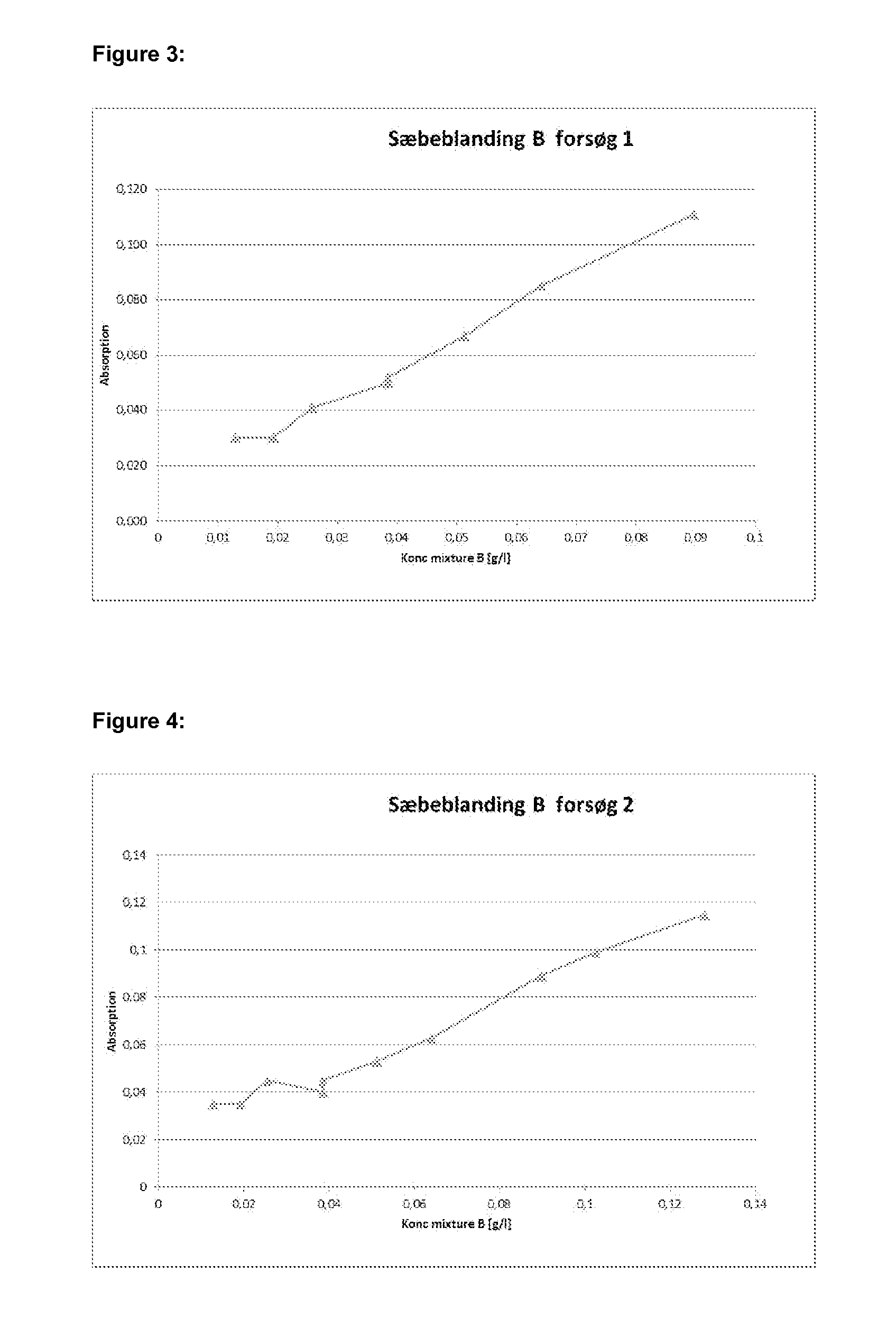Laundry Detergent
a technology of detergent and detergent composition, applied in the direction of detergent composition, plant growth regulator, biocide, etc., can solve the problems of real risk of fabrics being gradually eaten by enzymes, affecting the quality of laundry detergent, and not being recommended for washing and silk containing textiles. , to achieve the effect of minimizing the concentration required
- Summary
- Abstract
- Description
- Claims
- Application Information
AI Technical Summary
Benefits of technology
Problems solved by technology
Method used
Image
Examples
example 1
Delicate Liquid Laundry Detergent for Wool and Fine Textiles
[0264]The below table provides a detergent composition to be combined with one or more biocides as described herein. This particular detergent composition is preferably for washing wool, and may be used for other fine textiles.
IngredientAmount (% by weight)Marlipal 24 / 93925.0% Mackadet 40K5.0%Sodium Citrate10.0% Masquol P320 Na4-5%Alcoperse 2401-2%Alcoperse 7471-2%Lanolin, PEG-75 / 50 LV 2%MGP, Glycerol7.5%Ethanol2.5%WaterUp to 100%
example 2
Delicate Liquid Laundry Detergent for Silk and Fine Textiles
[0265]The below table provides a detergent composition to be combined with one or more biocides as described herein. This particular detergent composition is preferably for washing silk, and may be used for other fine textiles.
IngredientAmount (% by weight)Daclor 70-1-2310.3% Stepanol WA-extra E16.7% Mackadet 40K1.0%Marlipal 24 / 9393.4%Cosmacol ESI0.5%Integra 440.3%opacifierq.s.Perfumeq.s.WaterUp to 100%
example 3
Liquid Laundry for Textiles
[0266]The below table provides a detergent composition to be combined with one or more biocides as described herein. This particular detergent composition is for washing textiles in general and may be used for fine textiles.
IngredientAmount (% by weight)Soft soap10-20% Sodium lauryl sulphate5-10%Triton M (MGDA)0.5-2.0% Potassium tripolyphosphate5-10%Lutensol TO 895-10%Plurafac LF300 1-3%Glycerine 1-3%Perfume and colourq.s.Water60-65%
PUM
| Property | Measurement | Unit |
|---|---|---|
| temperatures | aaaaa | aaaaa |
| temperatures | aaaaa | aaaaa |
| temperatures | aaaaa | aaaaa |
Abstract
Description
Claims
Application Information
 Login to View More
Login to View More - R&D
- Intellectual Property
- Life Sciences
- Materials
- Tech Scout
- Unparalleled Data Quality
- Higher Quality Content
- 60% Fewer Hallucinations
Browse by: Latest US Patents, China's latest patents, Technical Efficacy Thesaurus, Application Domain, Technology Topic, Popular Technical Reports.
© 2025 PatSnap. All rights reserved.Legal|Privacy policy|Modern Slavery Act Transparency Statement|Sitemap|About US| Contact US: help@patsnap.com



